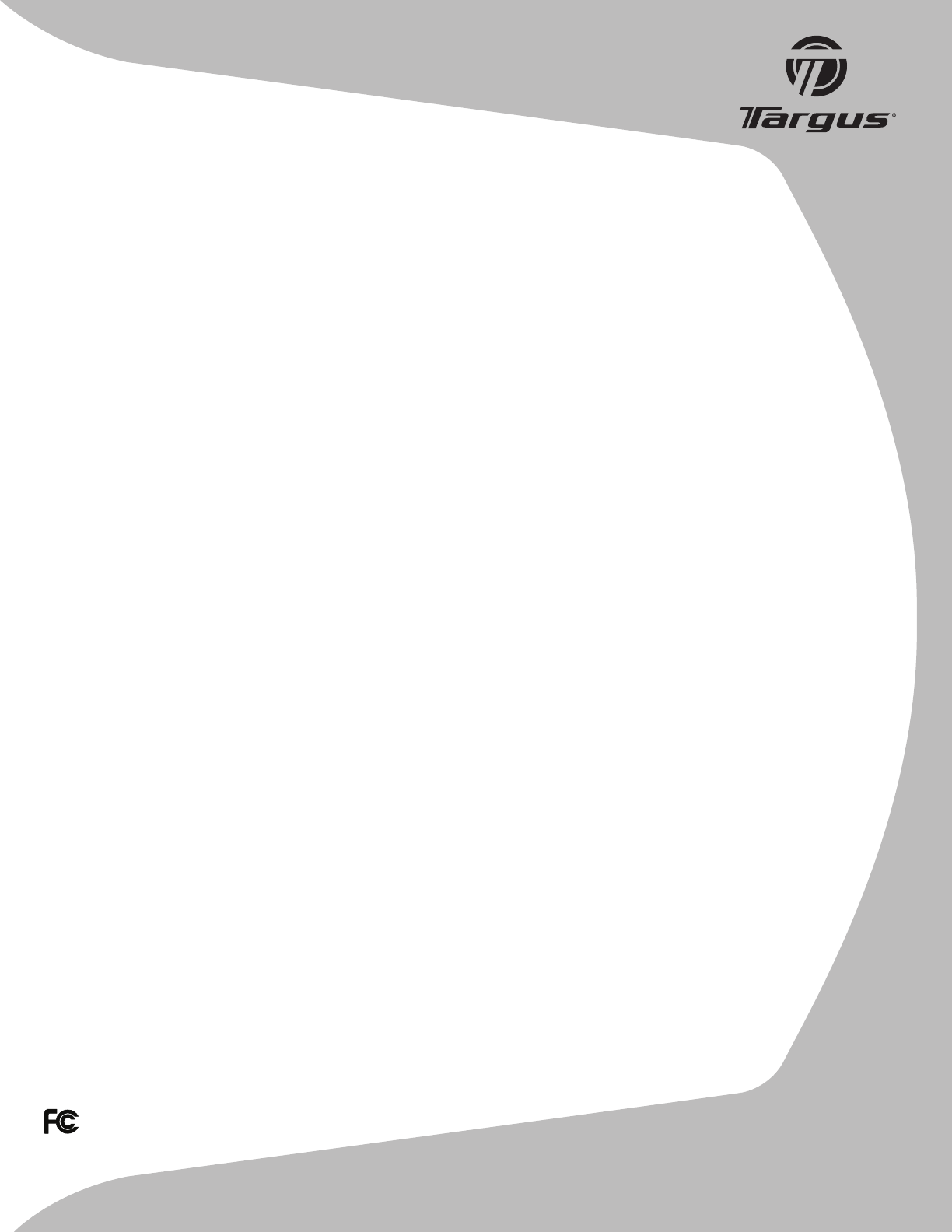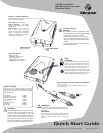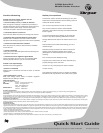
Quick Start Guide
APV10US / 410-0571-001AFeatures and specifications subject to change without notice. © 2006, Targus Group International, Inc. and Targus, Inc., Anaheim, CA 92806 USA.
Product Registration
Targus recommends that you register your Targus accessory shortly after purchasing it. To register your Targus accessory, go to: http://www.targus.com/registration.asp
You will need to provide your full name, email address, phone number, and company information (if applicable).
Warranty
Targus warrants this product to be free from defects in materials and workmanship for one year. If your Targus accessory is found to be defective within that time, we will promptly repair or replace
it. This warranty does not cover accidental damage, wear and tear, or consequential or incidental loss. Under no conditions is Targus liable for loss of, or damage to a computer; nor loss of, or
damage to, programs, records, or data; nor any consequential or incidental damages, even if Targus has been informed of their possibility. This warranty does not affect your statutory rights.
Regulatory Compliance
This device complies with Part 15 of the FCC Rules. Operation is subject to the following two conditions: (1) This device may not cause harmful interference, and (2) This device must accept any
interference received, including interference that may cause undesired operation.
FCC Statement
Tested to Comply
This equipment has been tested and found to comply with the limits of a Class B digital device, pursuant to Part 15 of the FCC Rules. These limits are designed to provide reasonable protection
against harmful interference in a residential installation. This equipment generates, uses, and can radiate radio frequency energy and if not installed and used in accordance with the instructions,
may cause harmful interference to radio communications. However, there is no guarantee that interference will not occur in a particular installation. If this equipment does cause harmful interference
to radio or television reception, which can be determined by turning the equipment off and on, the user is encouraged to try to correct the interference by one or more of the following measures:
• Reorient or relocate the receiving antenna
• Increase the separation between the equipment and receiver
• Connect the equipment into an outlet on a circuit different from that to which the receiver is connected
• Consult the dealer or an experienced radio/TV technician for help
Changes or modifications not authorized by the party responsible for compliance could void the user’s authority to operate this product
Technical Support
For technical questions, please visit:
US
Internet: www.targus.com/support.asp
Australia
Internet: www.targus.com/au
Email: infoaust@targus.com
Telephone: 1800-641-645
New Zealand
Telephone: 0800-633-222
100W Auto/Air®
Mobile Power Inverter
Trouble Shooting
Problem: No Power Output, indicator not ON
Possible causes and suggestions:
Safety Precautions
• This device outputs 120 Volts of electricity just as a wall
socket does. Exercise extreme care that nothing comes in
contact with the AC connector.
• Do not use in the presence of water or moisture.
• Do not use or place the inverter near flammable
materials or any locations that may accumulate flammable
fumes or gases.
• To avoid potential property damage, do not leave this
inverter or any device operating unattended in vehicle.
• Always disconnect the input to the inverter when it is not
in use.
• Disconnect the input cable before starting your car to
minimize surges.
• Reverse polarity connection will result in a blown fuse
and may cause permanent damage to the inverter
(Damage due to reversed polarity is not covered by our
warranty).
• Do not connect to AC distribution wiring.
• Improper use of this inverter can cause personal injury,
property damage, and or loss of life.
• This is not a toy. Keep away from reach of children.
• Indoor use only.
• The maximum in-seat DC power on airplane is 75 Watts.
Exceed this limit may shut down the in-seat power system.
• The Car’s battery is low (<11.5Vdc) or defective
Start the engine to recharge or replace the car’s battery if
needed. Disconnect the input cable before starting the car’s
engine to minimize power surge. If such a case occurs,
reconnect the cable to resume normal operation.
• Connection cable is not secured
Reconnect the cables and make sure all plugs are secured.
• Equipment being operated draws too much power
Reduce load to continuous 100 watts or below and use
equipment with starting surge power within inverter capability.
• Inverter in thermal shut down condition
Allow the inverter to cool down. Ensure there is ventilation
around the unit.
• Inverter Fuse blown
Unplug the power cable and replace the fuse following fuse
replacement instruction.
• Automotive Fuse for Cigarette Lighter Blown
Check and replace the fuse for your car's cigarette lighter
following the instructions in your car's service manual.
Problem: Low Output Voltage
Possible cause and suggestions:
• Inverter is overloaded
Reduce load to continuous 100 watts or below to maintain
regulation.
• Input voltage below 11.5Vdc
Keep input voltage above 12Vdc to maintain regulation.
Replace the car’s battery if needed.




